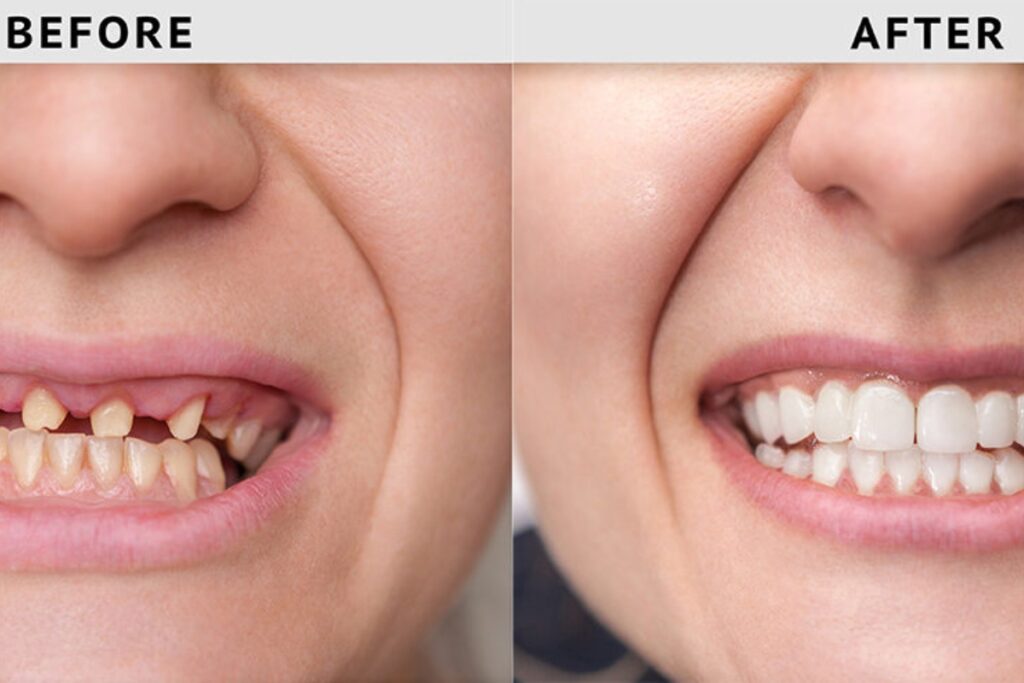Why Choose Dental Implants?
Tooth loss not only affects aesthetics but also leads to reduced chewing function, adjacent tooth displacement, and even facial deformation. Compared with traditional dentures, dental implants have become the preferred restoration solution in modern dentistry due to their high success rate (over 95%) and functions close to natural teeth. This article comprehensively analyzes the advantages, procedures, precautions, and maintenance methods of dental implants to help you make an informed choice.

I. Three Core Advantages of Dental Implants
1. Chewing Function Comparable to Real Teeth
- Biting force recovery reaches over 90% of natural teeth (only 30% for removable dentures).
- Case: A 65-year-old patient could normally eat hard foods like nuts and steak after implantation.
2. Protection of Oral Health
- Avoids adjacent tooth wear caused by traditional restorations (bridge restoration requires grinding healthy teeth).
- Prevents alveolar bone atrophy (implants stimulate bone tissue growth).
3. Long-Term Economic Value
- Service life: Over 10 years (lifetime with proper maintenance).
- Comparison: Removable dentures need to be replaced every 5-7 years, with potentially higher total costs.
II. Detailed Analysis of the Dental Implant Process
1. Preoperative Assessment (1-2 weeks)
- Mandatory examinations:
- CBCT (Cone Beam Computed Tomography) for bone volume detection
- Blood tests to exclude contraindications like diabetes
- Solutions for insufficient bone volume:
- Bone grafting
- Zygomatic implantation (avoids maxillary sinus)
2. Surgical Stages (in two phases)
| Stage | Procedure | Recovery Time |
|---|---|---|
| Phase 1 | Implant placement | 3-7 days |
| Osseointegration Period | Waiting for implant to fuse with alveolar bone | 3-6 months |
| Phase 2 | Install abutment and crown | 1-2 weeks |
3. Minimally Invasive Technological Breakthroughs
- Immediate implantation: Implantation immediately after tooth extraction (saves 3 months).
- Digital guide plates: Error <0.1mm, avoiding nerve damage.
III. Key Precautions
1. Indications and Contraindications
- Ideal candidates:
- Single/multiple tooth loss
- Alveolar bone density meets standards (height ≥8mm, width ≥5mm)
- Needs careful evaluation:
- Severe osteoporosis
- Uncontrolled periodontitis
2. Postoperative Care Essentials
- Golden 24 hours:
- Ice compress to reduce swelling (15 minutes each time)
- Avoid sucking actions (prevents blood clot detachment)
- Long-term maintenance:
- Use an oral irrigator to clean around implants
- Professional deep cleaning once a year
IV. FAQs about Dental Implants
Q1: Does dental implantation hurt?
→ Performed under local anesthesia, pain-free during surgery; mild swelling pain for 2-3 days postoperatively (controllable with ibuprofen).
Q2: Can the elderly undergo dental implantation?
→ Age is not an absolute limitation; successful cases over 80 years old are common (systemic condition assessment required).
Q3: Will dental implants fall off?
→ Rarely fall off under normal use, but avoid violent behaviors like biting bottle caps.
V. Technological Frontiers: The Future Is Here
1. Bioactive Coated Implants
- Hydroxyapatite coating accelerates osseointegration (healing period shortened by 30%).
2. 3D Printed Customized Tooth Roots
- Customized based on CT data for perfect matching with alveolar bone morphology.
3. Stem Cell Tooth Regeneration Technology
- Experimental stage: Using patients’ stem cells to “cultivate” new teeth (potential clinical application within 10 years).
Conclusion
Dental implants are a precious gift from stomatological medicine to humanity—they are not just substitutes for teeth but guardians of quality of life. By choosing a professional institution and strictly following medical advice, you will regain a confident smile and free chewing ability.



